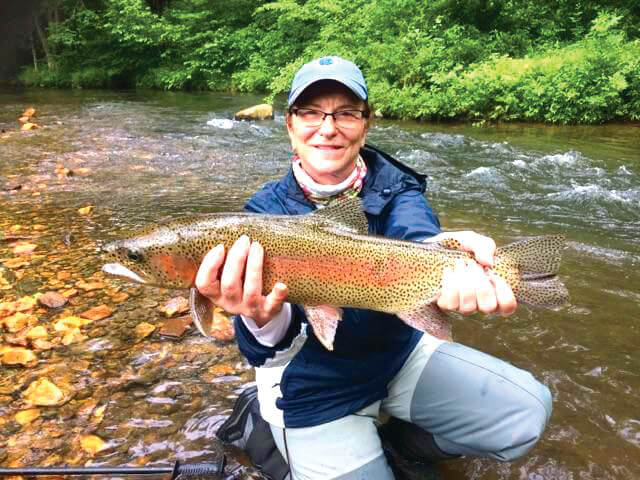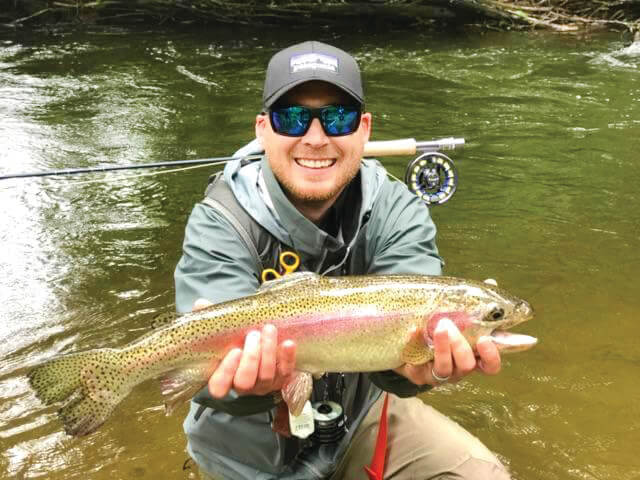By James Bradley:
August is a great time of year to throw big and nasty dry flies. Just about anywhere you go, big dries will work from the smallest streams to the biggest tailwaters. Anglers who want to catch fish should be casting hopper patterns, beetles, Letort Crickets, and the biggest dry flies in the box.
Many of the sparse hatches of mayflies and caddis flies have dissipated. If you see a hatch, these insects will be tiny, anyway. Since trout have become accustomed to looking up for their next meal, larger flies can be very enticing for trout to engulf. Remember those breezy early mornings and late evenings will find natural terrestrials in streams. Many will be knocked into the water due carelessness, by the wind or by being on the wrong leaf at the wrong time.
One of the best things about throwing larger flies is they are easy to see for most anglers of any age can and watching a trout slash up to grab one is a blast. Here are some tips on how to use that big old dry fly.
Many anglers attempt to softly land a large dry fly pattern like a hopper the same way they would a tiny midge. But when mimicking terrestrials, there’s no need to be delicate. Big trout eat big patterns. Both the streamer-chasing browns and the big rainbows will come out of nowhere, and from a distance, to cream a big hopper. But first, you must get their attention. A real grasshopper is heavy. When these things hit the water’s surface in nature, it is what I would call a blop. This is the attention getter. Forget the soft landing, you’re better off making a splash.
No luck with the dry? Go with a hopper/dropper pattern. A big hopper makes an excellent indicator. Use a big number 6 or 8 on top with a small number 16 to 20 as the dropper. Remember, hatches are smaller in the summertime. Any takes on the subsurface fly will jerk that big dry under the water. It’s easy to see, so just set the hook!
Where to fish these big flies depend a lot on the angler. Good casters can toss these things up under an 18-inch opening in the rhododendron, where trout will
Reel ‘Em In Guide Service is an Orvis Endorsed Fly Fishing Guide based out of Ellijay, Ga. See their website at www.reeleminguideservice.com.
